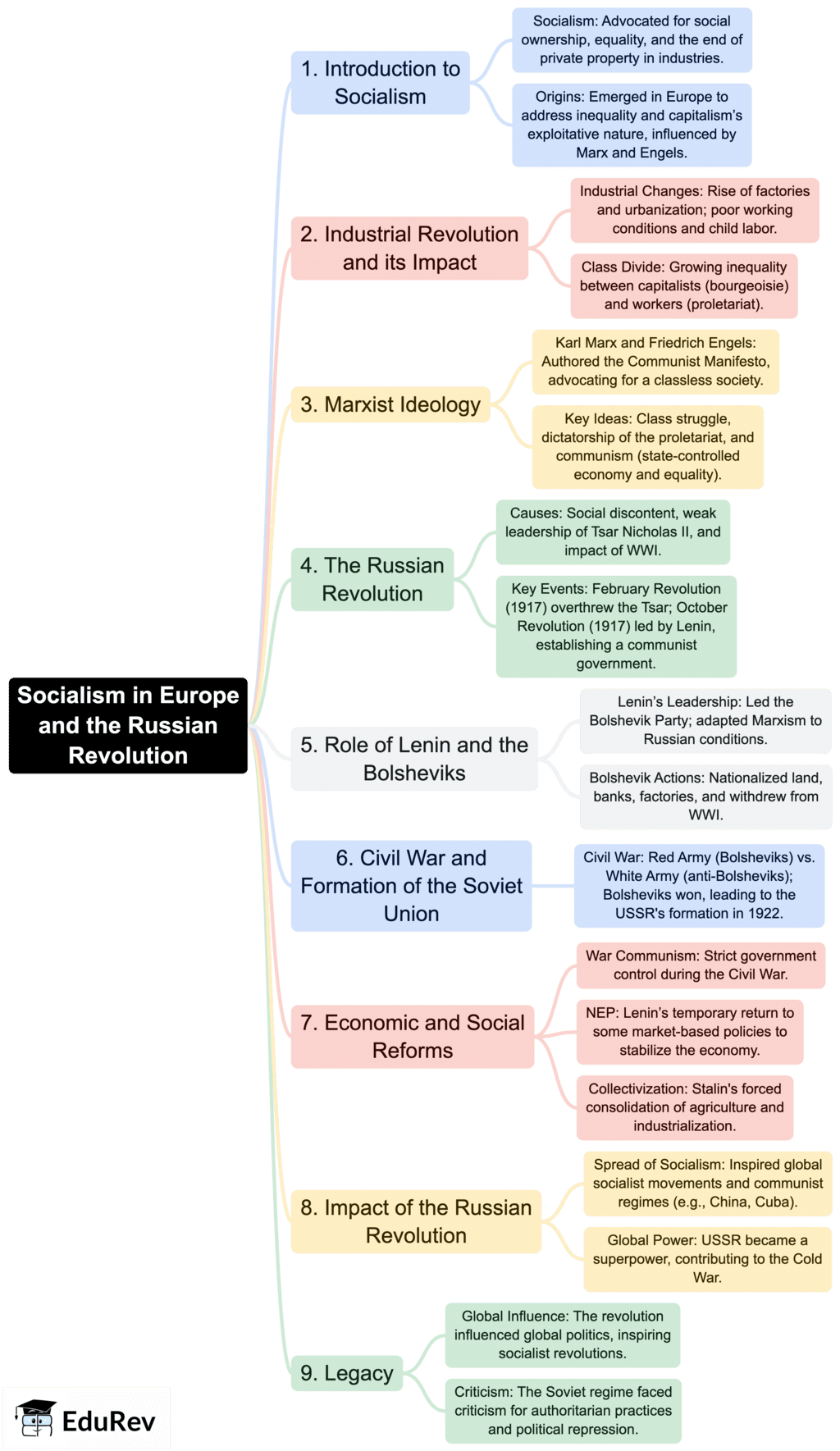Class 9 Exam > Class 9 Notes > Social Studies (SST) Class 9 > Mind Map: Socialism in Europe and the Russian Revolution
Mind Map: Socialism in Europe and the Russian Revolution | Social Studies (SST) Class 9 PDF Download

The document Mind Map: Socialism in Europe and the Russian Revolution | Social Studies (SST) Class 9 is a part of the Class 9 Course Social Studies (SST) Class 9.
All you need of Class 9 at this link: Class 9
|
55 videos|634 docs|79 tests
|
FAQs on Mind Map: Socialism in Europe and the Russian Revolution - Social Studies (SST) Class 9
| 1. What were the main causes of the rise of socialism in Europe? |  |
Ans. The rise of socialism in Europe was primarily caused by the industrial revolution, which led to significant economic changes, including urbanization and the emergence of a working class. The harsh working conditions, low wages, and lack of political rights for workers fueled discontent. Additionally, the influence of socialist thinkers like Karl Marx and Friedrich Engels, who critiqued capitalism and proposed a classless society, played a crucial role in spreading socialist ideas.
| 2. How did the Russian Revolution of 1917 influence socialism in Europe? |  |
Ans. The Russian Revolution of 1917 had a profound impact on socialism in Europe by demonstrating the possibility of a socialist state. It inspired socialist and communist movements across the continent, leading to increased support for revolutionary activities. The establishment of the Soviet Union also provided a model for socialist governance, which influenced various political factions and parties in Europe, including the rise of communist parties.
| 3. What were the key events of the Russian Revolution? |  |
Ans. The Russian Revolution consisted of two significant events: the February Revolution and the October Revolution. The February Revolution led to the abdication of Tsar Nicholas II and the establishment of a provisional government. The October Revolution, led by the Bolsheviks under Vladimir Lenin, resulted in the overthrow of the provisional government and the establishment of a socialist state. These events marked the beginning of a new political order in Russia.
| 4. How did the European socialist movements differ from the Russian Bolshevik approach? |  |
Ans. European socialist movements were often characterized by a focus on democratic reforms and gradual change within existing political systems. In contrast, the Russian Bolsheviks advocated for a more revolutionary and immediate overthrow of the existing order. While many European socialists sought to work within parliamentary systems, the Bolsheviks aimed to establish a dictatorship of the proletariat through direct action and insurrection.
| 5. What were the consequences of the spread of socialism in Europe after the Russian Revolution? |  |
Ans. The spread of socialism in Europe after the Russian Revolution led to both advancements and conflicts. Many countries saw the rise of socialist and communist parties, which influenced labor movements and government policies. However, this also led to significant backlash, including the rise of fascism and authoritarian regimes in response to socialist threats. The division between capitalist and socialist states eventually contributed to the geopolitical tensions of the Cold War.
Related Searches

















